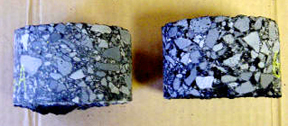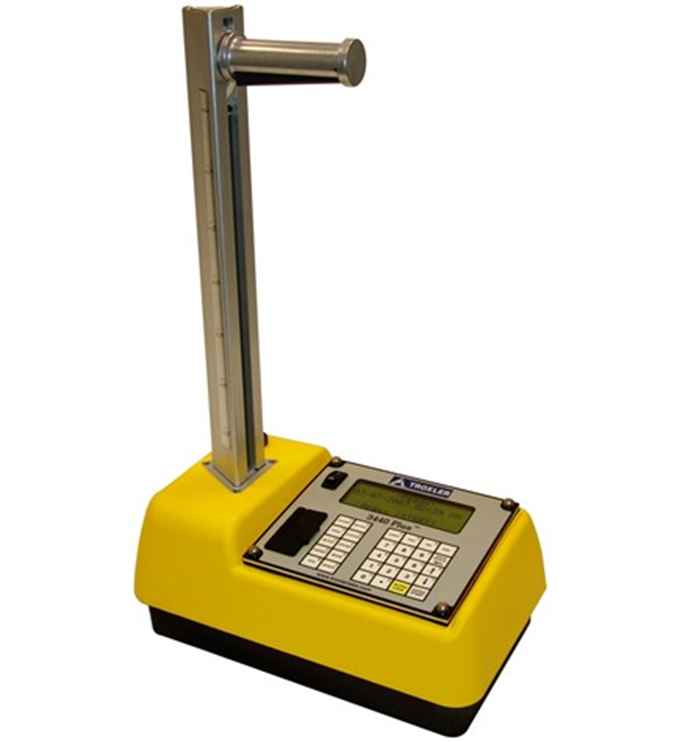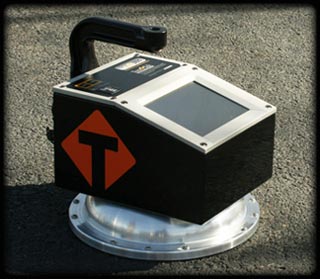8.2 Compaction Measurement and Reporting
Air void content is the measurement that determines the effectiveness of compaction. This measurement is expressed as a volume in terms of percent air voids of the compacted mixture. Percent air voids is calculated by dividing the test specimen’s bulk specific gravity (Ga) by its maximum theoretical specific gravity (Gr). Percent air voids is calculated by using Tex-207-F and Tex-227-F. This procedure uses a bulk specific gravity and a maximum theoretical specific gravity (also referred as Rice gravity) in the following equation:
Percent Air Voids = [1 – (Ga/Gr)] X 100
Where:
- Gr = maximum theoretical specific gravity of the particular HMA in question
- Ga = bulk specific gravity of the HMA in question.
This procedure requires a pavement core (usually 4 - 6 in. in diameter), which is extracted from the compacted HMA (see Figure 6-52 and Figure 6-53). This type of air void testing is generally considered the most accurate method, but is also the most time consuming and expensive.

Figure 6-52. Core extraction. © Copyright 2006 University of Washington

Figure 6-53. Two cores – the core on the right has significantly higher air voids. © Copyright 2006 University of Washington
Gr can also be used with a density gauge to measure the in-place density of the compacted pavement layer. The terms “percent air voids” and “density” are often used interchangeably. Density can be used to calculate percent air voids using the following relationship:
Air Voids = 100 - Density
Contractors can perform quality control of air voids indirectly using a portable density-measuring device such as a nuclear density gauge (see Figure 6-54) or electrical impedance measurement gauge (see Figure 6-55). Accurate calibration of these devices is critical.

Figure 6-54. Nuclear Density Gauge (Courtesy Troxler).

Figure 6-55. Electrical Density Gauge (Courtesy Transtec).